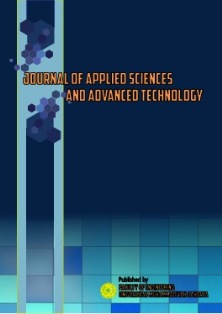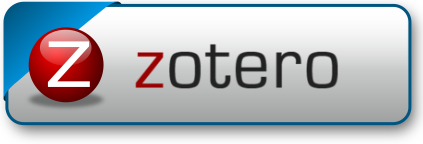The Improvement Of Electrical Power Generated By Pump As Turbine Using Guide Vane
DOI:
https://doi.org/10.24853/jasat.3.1.17-20Keywords:
Fluid flow, hydropower, vertical guide vaneAbstract
One of the problems faced by micro hydropower plant, including Pump as Turbine is low efficiency. Pump as Turbine (PAT) is one of micro-hydro power plant that uses a centrifugal pump as the turbine and modifies the pump motor to become a generator. Researches tried to improve the PAT efficiency by modifying the impeller and pump housing in order to optimize the flow that rotates the generator shaft. However, there is still another possibility of modifying and improving the water flow by using a regulating or guide vane. This research aims to improve PAT efficiency by conditioning the water inlet using a guide vane in a vertical direction. The regulating vane with a diameter of 56 mm has four vanes made of stainless steel. The vane is adjustable so that the vane opening can be regulated. In this research, the vane opening was setting at 0°, 30°, 45°, and 65°. The experimental test was performed at a PAT power plant's laboratory scale with a head of 3.7 m above the ground. The regulating vane was placed on 260 and 400 mm above the PAT. It showed that the power increased 7% when the guide vane placed 400 mm above the pump shaft with a 45° of vane opening.Downloads
References
S. V Jain and R. N. Patel, “Investigations on pump running in turbine mode : A review of the state-of-the-art,” Renewable and Sustainable Energy Reviews, vol. 30, pp. 841–868, 2014.
M. Binama, W. Su, X. Li, F. Li, X. Wei, and S. An, “Investigation on pump as turbine ( PAT ) technical aspects for micro hydropower schemes : A state-of-the-art review,” Renewable and Sustainable Energy Reviews, vol. 79, no. April 2016, pp. 148–179, 2017.
A. H. Elbatran, O. B. Yaakob, Y. M. Ahmed, and H. M. Shabara, “Operation , performance and economic analysis of low head micro-hydropower turbines for rural and remote areas : A review,” Renewable and Sustainable Energy Reviews, vol. 43, pp. 40–50, 2015.
P. Singh and F. Nestmann, “Internal hydraulic analysis of impeller rounding in centrifugal pumps as turbines,” Experimental Thermal and Fluid Science, vol. 35, no. 1, pp. 121–134, 2011.
D. L. Zariatin, S. Kumbarasari, and D. Rahmalina, “The Performance of Pump as Turbine with Machined Impellers,” in MATEC Web of Conferences, 2018, vol. 159.
D. L. Zariatin, D. Rahmalina, E. Prasetyo, A. Suwandi, and M. Sumardi, “The effect of surface roughness of the impeller to the performance of pump as turbine pico power plant,” Journal of Mechanical Engineering and Sciences, vol. 13, no. 1, pp. 4693–4703, 2019.
M. Suarda, N. Suarnadwipa, and W. B. Adnyana, “Experimental Work on Modification of Impeller Tips of a Centrifugal Pump as a Turbine,” vol. 008, no. November, pp. 21–25, 2006.
S. V Jain, A. Swarnkar, K. H. Motwani, and R. N. Patel, “Effects of impeller diameter and rotational speed on performance of pump running in turbine mode,” Energy Conversion and Management, vol. 89, pp. 808–824, 2015.
L. M. C. Ferro, L. M. C. Gato, and A. F. O. Falcao, “Design and experimental validation of the inlet guide vane system of a mini hydraulic bulb-turbine,” Renewable Energy, vol. 35, no. 9, pp. 1920–1928, 2010.
Y. Yassi, “Improvement of the efficiency of the Agnew micro hydro turbine at part loads due to installing guide vanes mechanism,” Energy Conversion and Management, vol. 51, no. 10, pp. 1970–1975, 2010.
A. Euromatic, “Radial Vane Damper,” 2015. [Online]. Available: http://www.dampervalvesmanufacturer.com/radial-vane-damper-inlet-multi-vane-manufacturer-supplier.html. [Accessed: 12-Sep-2019].
D. L. Zariatin, D. Rhakasywi, F. Ade, and A. Setyo, “Design of pump as turbine experimental test facility,” in MATEC Web of Conferences, 2017, vol. 108.
D. L. Zariatin, S. N. Fitria, Y. Dewanto, Ismail, and D. Rahmalina, “The performance of the modified pump motor as a generator on the Pump as Turbine ( PAT ) power plant,” in 3rd International Symposium on Green Technology for Value Chains 2018 IOP Conf. Series: Earth and Environmental Science 277, 2019.
Downloads
Published
Issue
Section
License
COPYRIGHT POLICY
The author(s) of an article published in the Journal of Applied Sciences and Advanced Technology (JASAT) retains ownership of the intellectual property rights in work (s).
PUBLISHING RIGHTS
The author(s) of an article published in the Journal of Applied Sciences and Advanced Technology (JASAT) have unrestricted publication rights. The authors give the Journal of Applied Sciences and Advanced Technology (JASAT) the right to publish the article and designate the Faculty of Engineering Universitas Muhammadiyah Jakarta Publishing as the original publisher of the article.
LICENSING POLICY
JASAT is an open-access journal that follows the Creative Commons Non-Commercial 4.0 International License (CC BY-NC 4.0), which states that:

Under this license, the reusers must give appropriate credit, provide a link to the license, and indicate if changes were made. Users may do so in any reasonable manner, but not in any way that suggests the licensor endorses users or their use.
Please take the time to read the whole license agreement (https://creativecommons.org/licenses/by-nc/4.0/). As long as reusers follow the license conditions, the owner cannot withdraw these freedoms. The following components are included under this license:
 Attribution: Users must provide appropriate attribution, including a link to the license, and indicate whether or not they made any modifications. Users are free to do so reasonably, but not in a manner that indicates the licensee approves of their usage.
Attribution: Users must provide appropriate attribution, including a link to the license, and indicate whether or not they made any modifications. Users are free to do so reasonably, but not in a manner that indicates the licensee approves of their usage.
 NonCommercial: Users may not use the material for commercial purposes.
NonCommercial: Users may not use the material for commercial purposes.












_2.png)


1.png)

2.png)
